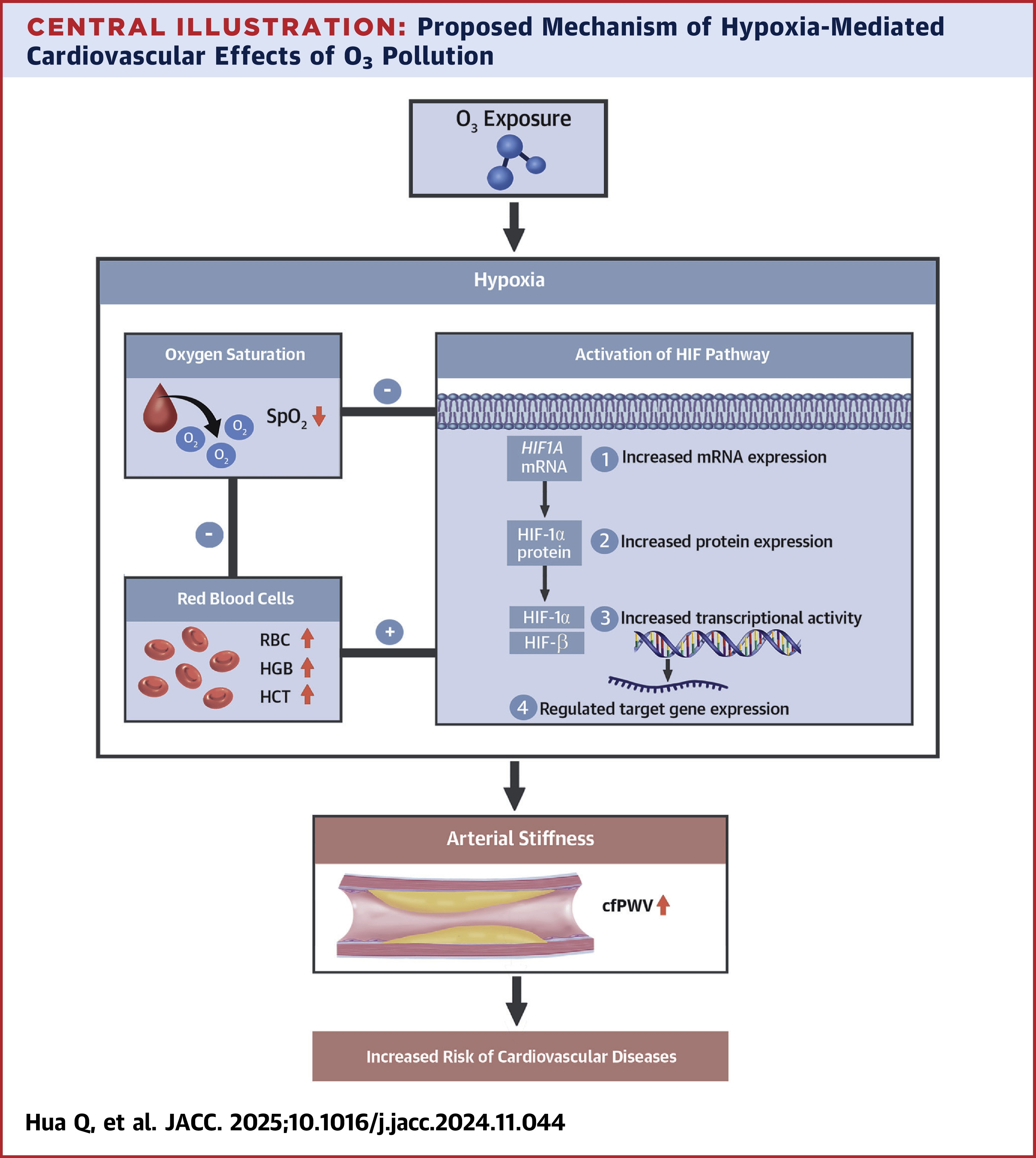Study Finds Ozone Pollution Exposure Induces Hypoxia and Contributes to CV Injury
Short-term exposure to ozone (O3) pollution may reduce oxygen availability, prompting compensatory increases in red blood cell count (RBC) and hemoglobin (HGB), which exacerbate arterial stiffness, according to a study published Jan. 22 in JACC.
Rising levels of O3 pollution, which forms when pollutants react with each other in sunlight and hot temperatures, especially in urban areas, pose a serious public health threat, according to a 2021 Global Burden of Disease study. Uncertainty still exists, however, about whether short-term O3 exposure is causal or biologically responsible for cardiovascular problems. To address this knowledge gap, Qiaoyi Hua, BE, et al., studied 210 healthy young residents (mean age 20 years; 57% women) in two cities at different altitudes (3,100 m and 3,650 m) on the Qinghai-Tibetan Plateau in China. Both cities have high ozone concentrations and low particulate pollution.
Participants were divided into lower and higher altitude groups based on the city's elevations. They attended four clinic visits from May 1 to Nov. 7, 2021. Study personnel conducted comprehensive examinations to assess participants' cardiovascular status.
The study investigators explored the relationship between short-term ozone exposure and hypoxic biomarkers and arterial stiffness using linear mixed-effects models. Hypoxic biomarkers included oxygen saturation (SpO2), RBC indicators and the hypoxia-inducible factor 1 (HIF-1) signaling pathway. Carotid-femoral pulse wave velocity (cfPWV), a marker of arterial stiffness, was a surrogate endpoint for cardiovascular disease risk.
Study findings demonstrated that O3 exposure one to seven days before clinic visits was significantly associated with hypoxia, reflected by decreases in SpO2 and increases in RBC, HGB and hematocrit with maximum changes by –0.42%, 0.92%, 0.97% and 1.92%, respectively. Additionally, O3 exposure was linked to activation of the HIF-1 signaling pathway, increased expression of genes promoting transcriptional activity and altered expression of target genes promoting transcriptional activity. Finally, the study showed that O3-induced hypoxic stress may further contribute to increased arterial stiffness, represented by elevated cfPWV, ultimately raising the risk of cardiovascular disease.

When combined with similar studies, the authors conclude that their findings of decreased SpO2, increased RBC indices and HIF-1 pathway activation "paint a comprehensive picture of systemic hypoxia triggered by O3 exposure in humans."
In an accompanying editorial comment, Alexandra Schneider, PhD, et al., note that the current study gives "compelling results on induced hypoxia by ozone exposure as an essential pathogenetic link between ozone pollution and [cardiovascular diseases]."
Randomized trials are needed to validate whether monitoring hypoxia status can help in early detection of O3-induced cardiovascular damage, and whether therapeutic interventions targeting improvement of oxygen delivery, reduction of blood viscosity or modulation of the HIF-1 pathway can help reduce the health burden of O3 pollution. More research is warranted, in particular, in diverse populations from a diverse environmental setting.
Clinical Topics: Cardiovascular Care Team
Keywords: Ozone, Environmental Pollutants, Global Burden of Disease, Hypoxia, Brain
< Back to Listings
